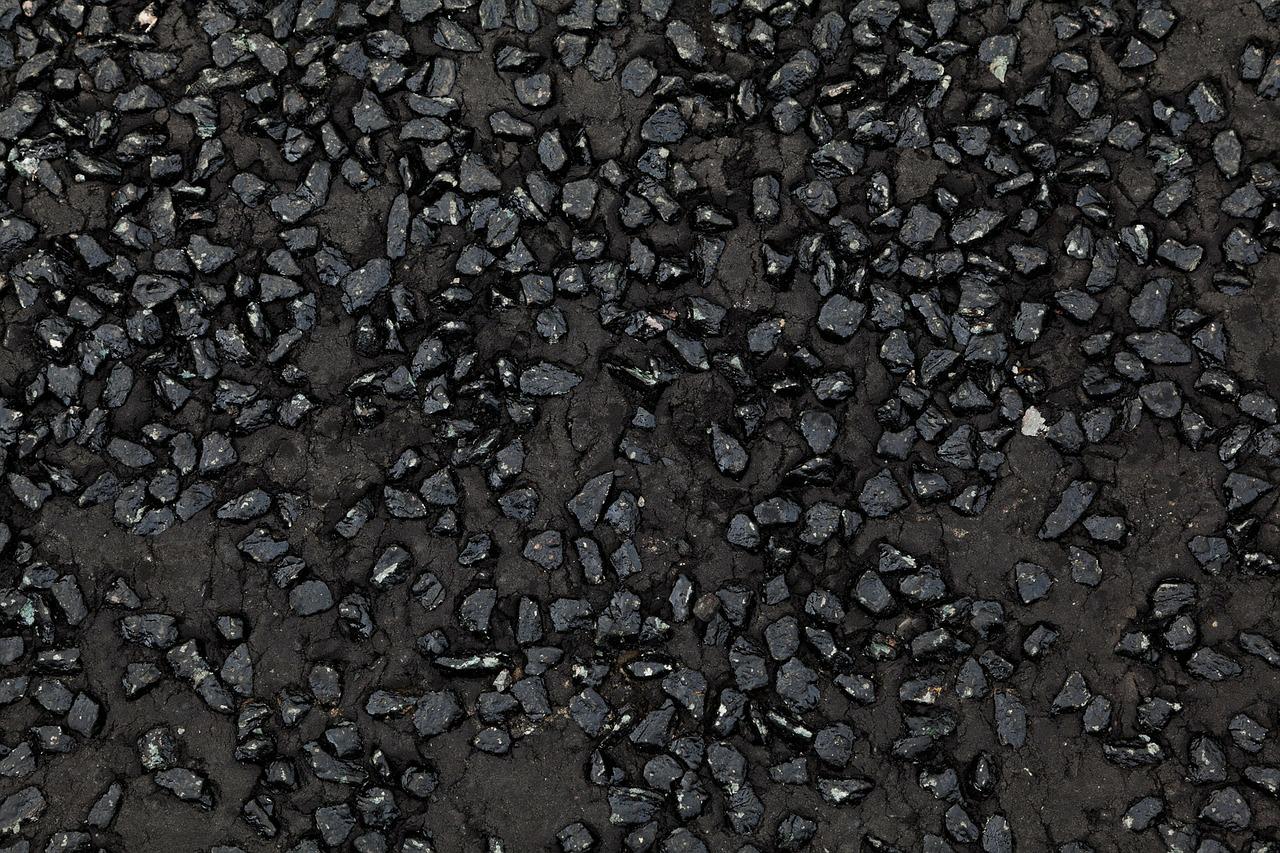Bitumen is a dense, highly viscous, petroleum-based hydrocarbon that is found in deposits such as oil sands and pitches lakes (natural bitumen) or is obtained as a residue of the distillation of crude oil (refined bitumen).
It is generally composed of asphaltene resin and other petroleum compounds.
Different compositions of bitumen result in different properties.
Origin of bitumen
Bitumen is found in nature and also can be extracted from crude oil.
1. Bitumen of natural origin
Millions of years ago, living organisms such as microscopic algae (diatoms) were buried under sedimentary rocks, swamps, and other aquatic habitats.
These residues were converted to natural bitumen under the pressure of the upper sedimentary layers and temperatures above 50 °C.
Bitumen is now found in hills and oil lakes. Most of the bitumen resources are in Canada, Venezuela, and Oman. There are also natural bitumen mines in the west of Iran. It has different ash content.
Natural bitumen or Gilsonite has many impurities including sulfur and heavy metals. The cost of extracting and using this bitumen is higher than the bitumen obtained from crude oil.
It is usually used as an additive for waterproofing coating, mud drilling, and road construction.
2. Crude oil distillation
Crude oil is the primary source of bitumen for the industry. Crude oil is a mixture of different compounds that is separated by a distillation tower. The remnants of the distillation tower, called the vacuum bottoms, are transferred to be processed and turned into bitumen.
Different types of bitumen, including penetration or oxidized bitumen, are produced by a different process on the vacuum bottom in the refinery. The main application of this bitumen is in road construction.
What is the difference between bitumen, tar, and asphalt?
Many people do not know the difference between bitumen, asphalt, and tar. Because of their similarities, these three terms may be used interchangeably. They are black, sticky, and suitable for use in road construction. However, they have distinct features that need to be considered before application.
In what follows, we provide you with a comprehensive guide on each product’s description. We also elaborate more on bitumen, asphalt, and tar’s properties and uses.
How is Bitumen Produced?
Bitumen is a by-product of crude oil. After taking crude oil to an atmospheric distillation column in refineries, we heat it to temperatures between 300 and 350 degrees Celsius. As a result, lighter fractions of crude oil separate from non-boiling components. This process leaves a sticky substance at the bottom of the column, which we call the vacuum bottom, and uses it as the raw material for producing refined bitumen.
Refined bitumen is not the only type of bitumen. Before processing crude oil, natural sources of bitumen have been in use in the world. For thousands of years, human beings extracted bitumen from lakes and rocks.
The bitumen that comes from lakes, contains 40 to 70 % of pure bitumen. To purify the bitumen, we boil it until the water in it completely evaporates and the impurities are separated. Rock bitumen, also known as oil sands, are sedimentary sources that contain 5 to 15 % bitumen. The main procedure for extracting bitumen from rocks is crushing, heating, and separating bitumen from other materials.
What are the different forms of bitumen?
The forms of bitumen are generally 5 types as follows.
- Penetration Grade Bitumen
- Viscosity Grade Bitumen
- Cutback Bitumen
- Bitumen Emulsion
- Oxidized Bitumen
Penetration Grade Bitumen: These grades of bitumen are classified due to their level of hardness. Penetration grades of bitumen are bitumen 30/40, 60/70, 80/100, and 100/120. To identify various grades of penetration bitumen, we enter a standard needle into our sample and see how deep it can go within a given time.
Viscosity Grade Bitumen: These types of bitumen are the result of a highly accurate system of classifying bitumen. After producing bitumen, we test them and measure their level of viscosity. This testing system introduces four VG grades, including VG10, VG20, VG30, and VG40. The higher the number, the more complex the bitumen in the viscosity grading system.
Cutback Bitumen: Cutback bitumen is produced by adding solvents to bitumen, in order to decrease the viscosity level. This procedure involves the addition of controlled amounts of petroleum extracts such as kerosene, naphtha, diesel oil, and furnace oil to bitumen. Cutback bitumen doesn’t need heating. Cutback bitumen can be used as paint in cold weather conditions.
Bitumen Emulsion: This type of bitumen is just like cutback bitumen, with one highly important difference. Refinery workers reduce the viscosity of bitumen emulsions with water, not petroleum additives. When we apply emulsions on the surface, water evaporates and the mix starts to set. As a result, there is no need to heat the mixture.
Oxidized Bitumen: To make bitumen more resistant to temperature, we can blow air into bitumen and produce oxidized bitumen. Known as blown bitumen, this type of bitumen is ideal for various industrial purposes, including roof insulation, flooring, industrial mastics, pipe coating, and paints.
What is asphalt?
In American English, people use the term asphalt (or asphalt cement) instead of bitumen. Outside the United States, however, asphalt is a mixture of bitumen with sand or gravel. For road construction, we use asphalt most of the time, mainly because of its durability and flexibility as a pavement.

Asphalt is produced in two different ways as follows.
- Natural asphalt
- Residual asphalt
Natural Asphalt
Natural asphalt is obtained directly from nature, especially from the two resources lakes and rocks. The lake asphalt contains 40 to 70 % of pure bitumen which is boiled in the tank and water content evaporates and impurities are separated. The final product is called asphalt which can be used for laying roads etc.
Rock asphalt contains 10 to 15% of pure bitumen and calcareous matter. These rocks are crushed and heated and consolidate by sudden cooling. This asphalt is used for paving tiles etc.
Residual Asphalt
Report this residual asphalt is obtained artificially by the distillation of crude petroleum oil with an asphaltic base.
Forms of Asphalt
The available forms of asphalt are:
- Cutback asphalt
- Asphalt emulsion
- Asphalt cement
- Mastic asphalt
Cutback Asphalt: is in a liquid state. Asphalt is dissolved in a volatile solvent to get this cutback asphalt. It is used for manufacturing bituminous paint, repairing roofs, etc.
Asphalt Emulsion: is obtained by adding 50 to 60% water to the asphalt in presence of a 1% emulsifying agent. The emulsifying agent forms a waterproof film when water evaporates. So, it can be used in cold conditions.
Asphalt Cement: is subjected to high-pressure air under high temperatures to get asphalt cement. Asphalt cement is plastic in nature and it is used for flooring, roofing, waterproofing material, etc.
Mastic Asphalt: is obtained by heating natural asphalt with sand and mineral fillers. It is impermeable matter and does not contain any voids. The hardness and melting point of mastic asphalt can be managed during the process of heating. It is in a solid state and by heating, it can be brought to a liquid state. It is used for damp-proofing courses.
Difference between bitumen and asphalt
In various countries, people use these two terms interchangeably. to avoid mistakes, we need to know that bitumen is sticky petroleum suitable for binding other materials. This substance has special adhesive properties that make it ideal for mixing with sand and producing asphalt. Asphalt, therefore, is a mixture of sand and bitumen. We use asphalt for paving roads.
What are bituminous roads?
In some parts of the world, it is possible to use bitumen alone for paving roads. In this method of road construction, we set up a layer of bitumen and top it with aggregates. We then repeat this process to create a two-coated seal. We can also use bitumen between various layers of a road for sealing them.
What is Tar?
Tar is a highly viscous liquid that contains a high amount of carbon content. It is used for laying surface layers for pavements, preserving wood, etc.
Forms of Tar
General forms of tar are as follows.
- Coal tar
- Wood tar
- Mineral tar
Coal Tar
Coal tar is the by-product obtained during the production of coal gas. It is used for preserving timber, laying macadam roads, etc. The process consists of coal heated in closed iron vessels and the evaporated gases are collected in tubes. These tubes are circulated with cooling water. So, some matter is deposited in these tubes and it is nothing but coal tar. It is a dense and strong-smelling liquid. It is black in color.
Wood Tar
Wood tar is obtained by the distillation of resinous woods like pines etc. The distillation of resinous wood provides creosote oil which has very good preservative properties. So, wood tar is well suitable for preserving wood.
Mineral Tar
Mineral tar is produced by the exploitation of kerogens. Kerogens are generally obtained from bituminous shale which is nothing but rocks. The volatile content of mineral tar is very less.
Difference between bitumen and tar
Tar is a viscous black liquid that is distilled from coal or wood. We use tar because of its wonderful properties as a waterproofing and sealing agent. Bitumen and tar are very similar in terms of appearance, but their properties are too different. In comparison to bitumen, tar has a higher amount of carbon, is a better adhesive, and becomes more fluid when heated. However, few people use tar instead of bitumen in road construction.
Tar has a wide variety of applications including waterproofing, coating timbers, and skin care.
Types of bitumen and their applications
Since various kinds of crude oils give various types of bitumen with completely different properties, grading bitumen is vital.
For grading bitumen based on its properties, refineries use a number of standard tests to measure the viscosity level, penetration value, performance, and consistency of bitumen.
The result of these tests is bitumen penetration grades and viscosity grades.
Other grades of bitumen, including cutback bitumen, oxidized bitumen, and bitumen emulsions are classified based on their production process.
1. Gilsonite (Natural bitumen):
Gilsonite is natural bitumen with a shiny and smooth and solid appearance. Types of Gilsonite are classified based on their ash contents and the solubility in organic solvents.
Since it is a hard and brittle material, it is mostly used in powder form. Gilsonite composition is close to refinery bitumen.
Sometimes in the road construction industry, the combination of gilsonite with refined bitumen is used. Although it has a higher resistance to water penetration its degree of penetration and deformation is low.
Applications of gilsonite:
- Printing Industries
- Painting industry
- Drilling mud and cement
- Asphalt and road construction
- Casting sand additive
- Chemical products
- Improving the quality of bitumen
2. Penetration grade bitumen
Penetration bitumen is the most widely used bitumen for road construction.
After production in the refinery, it is classified by penetration test using a penetrometer apparatus. The deeper the needle penetrates into the bitumen surface, the softer it will be and more suitable for colder weather. The most widely used bitumen for road construction is penetration bitumen of 60/70 grade and then the grade of 80/100. Furthermore, 60/70 grade is widely used as a waterproofing material in buildings.
To use this bitumen, you should pay attention to the average temperature of the area and the amount of traffic.
In the table below, you can see the different grades of this penetrating bitumen along with its application.
| Penetration grade | Penetration value | Softening point | Application |
| 40-50 | 40-50 | 52-60 ° C | Tropical areas mean T > 24° C |
| 60-70 | 60-70 | 49-56 ° C | Mild climate region7° C < Mean T < 24° C |
| 85-100 | 85-100 | 45-52 ° C | Cold climate mean T < 7° C |
| 100-120 | 100-120 | 42-49 ° C | Used for road repairs in cold regions |
3. Viscosity grade bitumen
Viscosity grade bitumen is classified based on its viscosity after production of the bitumen in the refinery. This classification is almost newer than the penetration classification. The highest consumption of this bitumen is in India.
Viscosity bitumen has four different grades that are VG 10, VG20, VG30, and VG 40. They have different applications.
| Grade | Viscosity Range at 60°C (Absolute Viscosity) | Typical Applications ∞ |
| VG-10 Bitumen | 800-1200 | Recommended for road construction in cold regions ideal for spraying used in the production of bitumen emulsion |
| VG-20 Bitumen | 1600-2400 | Used in cold regions for road construction |
| VG-30 Bitumen | 2400-3600 | Maximizes asphalt performance in hot regions more reliable choice than bitumen pen 60/70 |
| VG-40 Bitumen | 3200-4000 | Works in areas with high traffic loads well suited for road construction in hot weather |
The reason for using viscosity grading instead of penetration is the change in the viscosity of bitumen at high temperatures.
Here are some advantages of VG bitumen to Pen grades:
- This grading system is designed to increase the accuracy of bitumen in hot temperatures. A specific grade of pen bitumen may show various results at a specific temperature, but VG bitumen behaves always the same.
- When there is a need to predict bitumen behavior in the hottest time of the year as well as its properties in normal weather conditions, VG bitumen is a better choice. Since viscosity testing is based on experimenting with bitumen’s properties at three different temperatures (25° C, 60° C, and 135° C), all grades of VG bitumen come with an easier application.
4. Emulsion bitumen
Bitumen emulsion gets its name from how it is produced. This type of bitumen is a chemical combination of bitumen and water.
It came to the industry to avoid the environmental damage of cutback bitumen. Since water is a reliable alternative to organic solvents to dilute bitumen sufficiently for special applications.
Emulsion bitumen is beneficial to waterproofing, spraying, and tack coats between layers of asphalt pavement.
Transporting, handling, and storing bitumen emulsion are all easy, economical, and safe.
Bitumen emulsions are classified based on two main factors:
- Particles’ electrostatic charge
- Breaking or setting time
According to their electronic charge, bitumen emulsions can be anionic (with a negative charge) and cationic (with a positive control).
The second grading system is based on the time that is needed for a bitumen emulsion to lose water and become sticky enough to bind aggregates.
Various grades of bitumen emulsions have different properties, therefore, each type is suitable for a particular type of application.
Three factors, viscosity level, setting time, and electronic charge of bitumen particles, have an influence on where we use each grade and type of bitumen emulsions.
Bitumen emulsions are less viscous than other grades of bitumen because they are mixed with water and emulsifiers. As a result, we use this type of bitumen for spraying applications.
Bitumen emulsions are also ideal for pavement maintenance and renovating old roads.
Major applications of bitumen emulsions in today’s bitumen industry are tack coats, chip seals, slurry seals, and micro surfacing.
5. Cutback bitumen
This bitumen is used in industries that require low-viscosity bitumen. Cutbacks are also used in cases where bitumen can not be preheated to make asphalt.
To prepare cutback bitumen, penetration bitumen is mixed with organic solvents in a certain amount. These organic solvents include gasoline, naphtha, diesel oil, and furnace oil.
This type of bitumen is suitable for cold climates. The solvents evaporate when bitumen is used.
The cutback is suitable for primer sealing and sprayed sealing.
The only concern was the harm that cutback bitumen had, to the environment. The volatile solvents were hazardous to nature, humans, and the environment.
6. Oxidized bitumen
Oxidized bitumen is obtained in the refinery by blowing hot air into the penetration bitumen. The bitumen obtained from this process is chemically stable and has high durability. It is also impermeable to water and is suitable for insulation.
Oxidized bitumen has a lower degree of penetration and higher softening point compared to pure bitumen. Also, it is classified based on these two properties.
Applications of oxidized bitumen include waterproofing in dam construction projects, buildings, etc. Also, it is applicable in road construction in combination with other types of bitumen. In other industries, especially oil, and gas, it is used to cover pipelines to prevent corrosion.
7. Performance Grade bitumen (PG bitumen)
Bitumen Performance Grade is a type of bitumen grading system according to its performance at different temperatures.
A bitumen that can endure a wide range of temperatures is more suitable.
Classification of PG bitumens is done at high and low temperatures.
The major issue for high-temperature performance is rutting, which normally takes a while to amass. It takes some time for rutting to disappear.
At low temperatures the probability of cracking increases.
To evaluate bitumen’s performance, the average maximum and minimum environment temperatures at which asphalt will be made are chosen.
The bitumen is then exposed to these two temperatures for a week.
The average high and low temperature is increased by 6 °C.
The high temperature in these grades is in the range of 46 to 82 °C and the low temperature is in the range is -46 to -10 °C.
Grading bitumen is based on a positive number and a negative number, which indicates the maximum and minimum temperature.
For instance, bitumen PG 64-10 meets the performance factor at an average seven-day maximum pavement temperature of 64 °C and also at a minimum pavement temperature of -10 °C.
If the sum of high and low-temperature numbers is more than 90, it will be polymer-modified bitumen, and if it is less than 90, it will be unmodified polymer bitumen.
As an example, a PG 76-22 is considered a polymer-modified binder since the sum is 98. Another example is a PG 64-10 is an unmodified binder.
Thermal cracking is less likely to occur in PG grades 58-34, 64-22, 64-28, and 76-22. In addition, the PG 70-22, 70-28, 76-28, and 82-22 grades are more resistant to rutting.
Note: Due to the black color of asphalt and more heat absorption, the asphalt temperature can be 20 °C higher than the ambient temperature.
Performance grade bitumen is commonly used in the construction and reconstruction of pavement, sealing edges, and sealing cracks in both dense and open grade Hot Mix Asphalt (HMA).
Bitumen tests
Bitumen quality tests are a criterion for diagnosing the quality and classification of bitumen in the industry. These tests are also taken to control the quality and guarantee the bitumen load issued and imported in the ports of origin and destination.
According to SGS standards, bitumen quality control tests, or bitumen tests, in summary, include:
1. Penetration test:
The penetration test is used to measure the hardness and softness of bitumen. Penetration bitumen obtained from the refinery is classified based on this test. The degree of penetration of bitumen is directly related to its ductility and shows that asphalt has a higher loading capacity.
High-penetration bitumen is suitable for cold climates and low-penetration bitumen is suitable for hot climates.
To perform this test, a needle is penetrated into the bitumen surface with a load of 100 grams for 5 seconds. The degree of penetration is equal to the amount of needle penetrating. Its unit of measurement is 0.1mm.
2. Viscosity test:
The viscosity test is used to determine the adhesion of bitumen to asphalt aggregates. Bitumen must have an optimal viscosity value. This means that very viscous or very low viscosity bitumens are not suitable for road construction. In addition, viscosity is highly sensitive to temperature increase, and with increasing temperature, the amount of viscosity decreases as a result, its cohesion is lost. For this reason, viscosity is measured at temperatures of 60 °C and 135 °C. By measuring this two viscosity we can have sufficient information about the best temperature we should mix and compact bitumen with aggregates.
To measure the viscosity, of the viscometer apparatus, the time required to remove a certain amount of bitumen from the viscometer is measured and multiplied by the correction factor of the device. The number obtained is equal to the viscosity of the bitumen.
A schematic is shown below, together with a cup viscometer.
3. Softening point test:
Bitumen as a combination of different hydrocarbon materials such as asphaltene and resin does not have a specific melting point. By heating the bitumen, it becomes soft and melts slowly.
The temperature at which bitumen starts to melt/softer is called the softening point. This point is important for engineers because it indicates at what temperature the bitumen loosens and its adhesive decreases.
The laboratory method of measuring the softening point is the ring and ball method.
To perform the test, the bitumen sample is taken in two brass rings. Two steel balls are placed on the bitumen samples. Then the assembly is placed in a water bath and heated.
The softening point is the temperature at which the steel ball coated with bitumen hits the bottom of the glass beaker.
4. Ductility test:
As long as the bitumen has good ductility, it will be resistant to road traffic as well as expansion and contraction of bitumen due to temperature changes, and the possibility of asphalt cracking will decrease and asphalt life will increase.
To measure this property, bitumen is poured into a special mold and the mold is pulled from both sides at a constant speed of 5 cm per minute. The amount of bitumen stretched to the moment of rupture is reported as ductility. The longer the length, the greater the ductility.
5. Specific gravity test
Specific gravity is the ratio of the mass of bitumen to the mass of water, both of which have the same volume.
Each bitumen has a certain amount of specific gravity. As a result, this property is used to measure the number of impurities in the bitumen. It is also used for calculations.
We use a pycnometer to measure this property. First, weigh the pycnometer, then fill it with bitumen and weigh it again. In the same way, fill the pycnometer with water and weigh it. We subtract the weight of the pycnometer from the readings of the pycnometer filled with water and oil. The ratio of bitumen weight to water weight is equal to the specific gravity of bitumen.
6. Solubility in TCE
This test is performed to measure the purity of bitumen. This test detects non-oil impurities. For this purpose, 2 grams of bitumen is dissolved in 125 ml of trichloroethylene. The solution is weighed and then filtered through Whatman paper. Impurities are washed and dried and finally weighed. The percentage of impurities should not be more than 1% because it indicates the low quality of bitumen. High impurity in bitumen will have low adhesion strength.
Insoluble matter (%) = mass of insoluble materials/mass of bitumen sample
7. Flash and Fire point test
There are also risks in transporting and storing flammable materials. As a result, it is more important to notice the flash and fire point of bitumen.
Heat causes liquid materials to evaporate. If the liquid is flammable, it will catch fire if there is an ignition source like a flame.
Two devices are used to obtain the flash point and fire point:
- Pensky-martens
- Cleveland open cup tester
The procedure of the test is that bitumen is poured into the cup of the apparatus and then it is heated.
During heating, the flame passes over the liquid surface and through the vapors once every 2 seconds.
The temperature at which an instant flame appears on the surface of bitumen is called a flash point.
To obtain the flash point, heat is continued and the flame continues to pass over the surface of the liquid until an instant flame reappears on the liquid surface for a moment.
Compared to the previous flame, this one lasts longer. Its temperature is reported as the fire point.
8. Loss on heating test
The amount of volatiles in the bitumen is measured by the loss on the heating test. Volatiles are compounds that have a lower boiling point than water and evaporate at a lower temperature.
The higher the percentage of volatile materials in the bitumen, the harder it becomes for the asphalt during the heating process and it loses its elasticity. A suitable bitumen binder should contain less than 1% volatiles.
To perform this test 50 g of bitumen sample is heated in the oven at 163 °C for 5 hours. After that, the bitumen sample is weighed.
The percentage of loss on heating is calculated as follows:
Loss on heating (%) = [(Initial weight – Final weight)/Initial weight]*100
9. Spot test of bitumen
The spot test of bitumen is used to indicate that the bitumen is not damaged during the refinery’s overheating.
In a refinery, if the heating was so high cracking occurs in bitumen. Cracked bitumen is not sticky enough to hold aggregates together. Moreover, it can not tolerate the preheated process of road construction.
To perform the test 10 ml of a solvent is put in a flask containing 2 grams of bitumen sample. The solution is rotated and placed in boiling water until it is dissolved completely.
After it cools to room temperature, put a drop on filter paper.
If the trace of the drop is brown the test is negative. Inversely if the drop is brown with a black center the test is positive and the bitumen is damaged.
10. Drop in penetration after heating test of bitumen
Drop-in penetration tests measure the hardness and volatile content of bitumen.
When bitumen is heated for construction the volatile component evaporates and causes the material to harden. When bitumen has a more volatile content, its hardness increases after heating.
To perform the drop-in penetration after the heating test, apply the needle with a load of 100 grams for 5 seconds on the bitumen surface. Note the amount of penetration at 0.1 mm.
Then the bitumen sample is placed in the oven at 163 ͐degrees celsius for 5 hours.
After removing the sample, it is allowed to cool. In the next step, the penetration test is repeated.
Drop in penetration value (%) =
[ difference between 2 amounts of penetration/initial amount ] * 100
Bitumen manufacturers
According to global statistics, China is the largest producer (and also consumer) of bitumen in recent years, with a production of 22 million tons per year, and the United States is in close competition with an annual production of nearly 21 million tons. Russia ranks third with a production of almost 7.8 million tons per year. Iran, India, and South Korea follow closely behind with annual production of about 5 million tons,
It is important to mention that the most important exporters are South Korea, Iran, Singapore, Russia, Canada, and Germany respectively.
In the bitumen market, competition is easier for manufacturers and sellers than in other markets.
There are no major players in this market. The top 5 largest producers and marketers of bitumen are:
- Exxon Mobil Corporation
- Royal Dutch Shell Plc
- bp p.l.c.
- Nynas AB
- China Petroleum & Chemical Corporation (SINOPEC)
Comparison Between Asphalt, Bitumen, and Tar Properties
| Property | Asphalt | Bitumen | Tar |
| Color | Blackish brown | Dark color with a slight reddish tinge | Deep black |
| State | Solid or semi-solid | Solid | Viscous Liquid |
| Carbon content | Low | Medium | High |
| Water Resistance | More | More | Less |
| Acid resistance | More | More | Less |
| Adhesive power | Less | More | High |
| Setting time | Less | Less | More |
We hope this article helped you learn about What is Bitumen? | Types and Tests of Bitumen. You may also want to learn about What is Civil Engineering? | History and Functions, Engineering Disciplines, Brick Masonry | Advantages, and Disadvantages, and Structural Engineers.
If you liked this article, please Join WebsiteForEngineers on Telegram, and you can also find us on Pinterest, Twitter, and Facebook.














